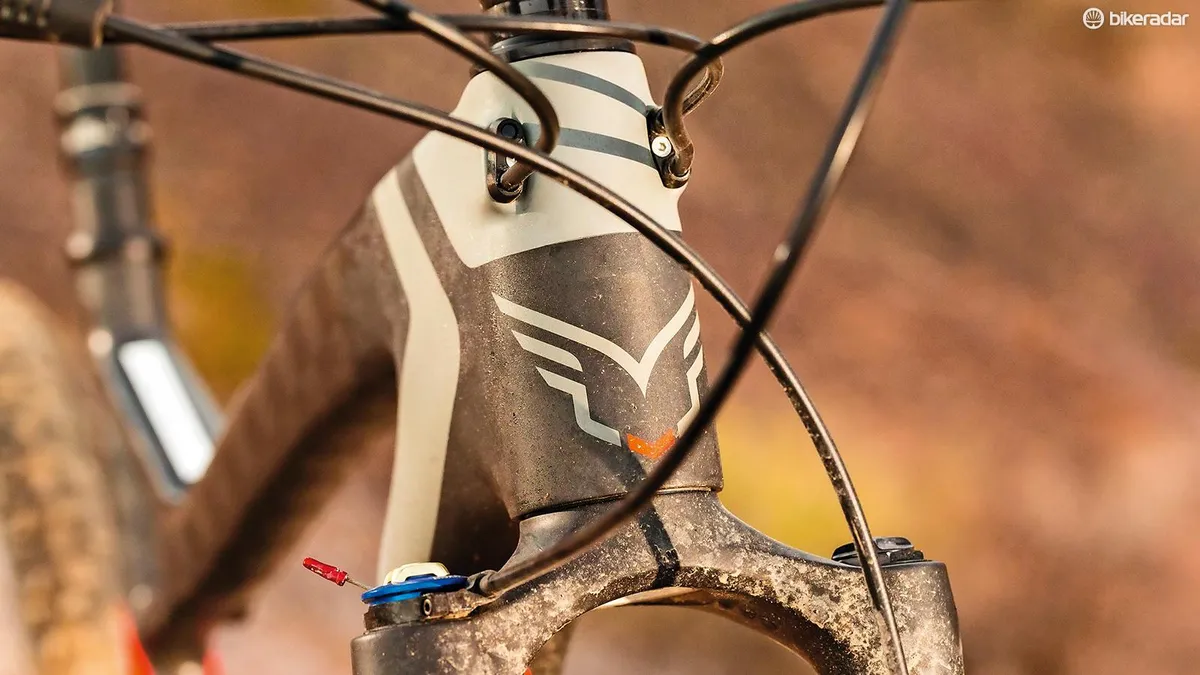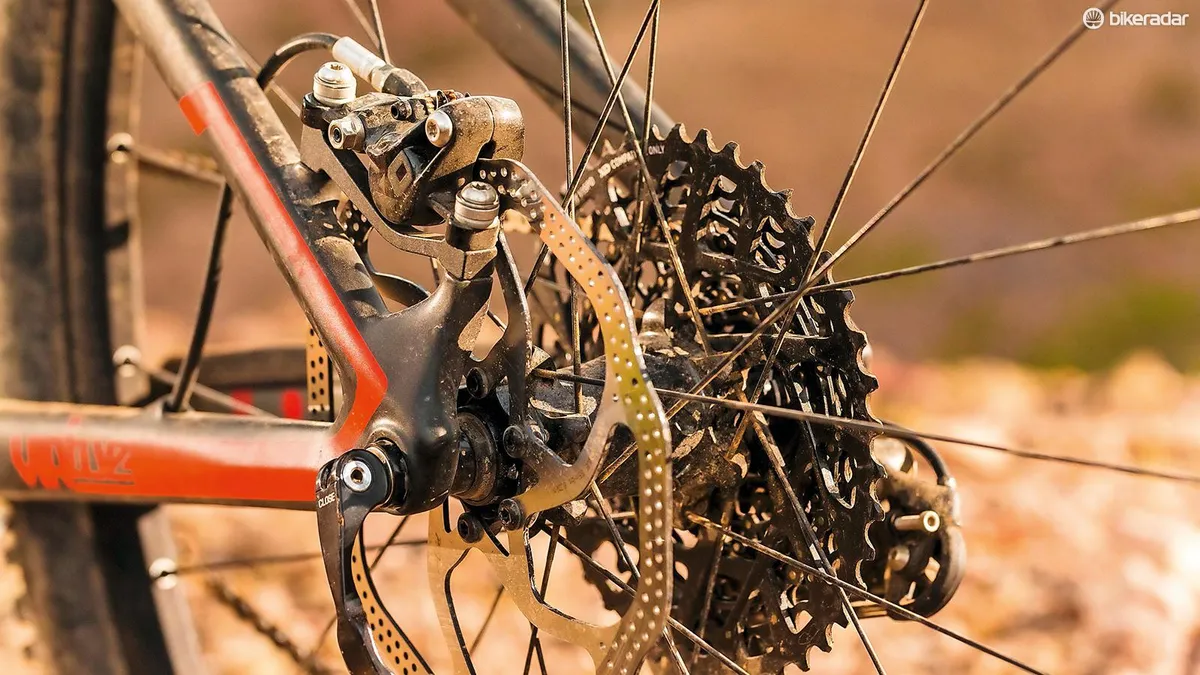We’re sometimes so strapped for time in the rush to hit the desert with fresh bikes that we don’t know the travel or even intended use details of a bike before we take to the trails on it. That was definitely the case with Felt’s Virtue when we sneaked it out for several hours of dusk and dawn sessioning.
Ride and handling: up and away
Heading straight out of the gates for the trails inevitably involves the Bootleg Canyon fire road climb. It’s not particularly long, it’s not even very steep, but the transition from Tarmac to loose gravel – particularly at the aching legged start of the second session of the third day of testing – definitely focuses your mind on the pedal-powered efficiency of a bike. It’s at that point that we figured Felt’s Virtue was definitely a bike designed for riders with a lot of climbing, preferably fast, extended climbing, on their minds.
On smoother terrain the Equilink suspension system feels tight under power. That’s not surprising given that the vertical tie rod between the upper and lower linkages is deliberately designed to stop them pulling apart (the lower one downwards towards the bottom bracket and the upper one upwards away from the bottom bracket) as you pedal. Add the natural resistance to movement from the springy flex stay (rather than a conventional cartridge bearing pivot) and the Virtue has a natural mechanical ‘platform’ effect for uninterrupted pedalling.

Equilink suspension uses a physical link to reduce pedal bob
Even if you knock through this crust and get things moving, the rear wheel sits pretty much equidistant to the chainset once you’re passed the sag point. This means that as long as you sit and spin there’s no really noticeable pedal feedback through your feet even when you look down and realize the shock is moving a fair amount as you trundle along. Add a steep seat angle and relatively long chainstays keeping the rear end locked onto the earth and the Virtue hangs in extremely well even when climbs get properly vertical.
There’s enough clearance under the pedals to keep you cranking over rock ledges without smacking your cranks into the edges, and the simpler opening sections of trail were dispatched with impressive haste.

Once you stop climbing, the Virtue's twangy rear end presents a challenge or two
Things get more awkward once the trail starts to level out, speed starts to build and the shock starts getting worked more frequently and more violently. Because the Equilink system is designed to stay largely independent of pedal torque, that places responsibility for stopping the rhythmic movement of legs and bar heaving on very accurate shock tuning.
The flex stays always try and regain their shape by springing back after an impact so rebound damping adjustment is particularly important. It’s not simple though because they twang back with more force the further you deflect them, which combines with the faster deep stroke rebound of the Rapid Recovery shock damping to really fling things back fast from big hits.
Frame and equipment: a case of mistaken identity?
Even with the rebound as close to spot on as we could get it by running repeated same section sessions there was a rubbery feeling to the rear end that reminded us a lot of the old rider adjustable negative and positive air spring RockShox SID forks of a decade ago. This meant it was a long time before we spotted the 140mm travel sticker on the Revelation fork and realized that the back end was intended to feel more capable than the short to mid-travel race bike that it actually felt like on the trail.
The 32mm-legged Revelation chassis is stretched past its comfortable limits in this 140mm travel, 29er version so while the actual suspension feel is good there’s a lot more twang and vagueness between the bars and front contact patch than you’d get with a 34 or 35mm-legged fork such as a Pike.

With 29in wheels and 140mm travel, the RockShox Revelation is overstretched
Despite a lot of rubber on the trail courtesy of its 29x2.35in Schwalbe Nobby Nics the Felt is a naturally rapid and pedal responsive machine that gains speed easily and doesn’t like to let go of it if it can help it. A lot of that is down to the competitively low weight, which comes from the minimal mass UHC Ultimate TeXtreme carbon layup – revealed by the subtle chequerboard effect on the mainframe tubes. The more cross-country-style 720mm bars and 80mm stem complete with racer’s favourite ESI silicone foam grips definitely tip the vibe more towards Lycra than baggies.
Even on the large frame that we tested the Reverb Stealth seatpost can’t be fully inserted into the frame without bottoming out onto the upper linkage pivot axle, which pierces the seat tube. It’s certainly not a big issue unless you want a larger frame than your legs would normally suggest was suitable but it is an apt reflection of the overall ‘more cross-country than it looks’ character of the Virtue.
There’s always a temptation for manufacturers to advertise that their machines are suitable for whatever part of the sport happens to be hot at the time. Unfortunately that can often do more harm than good as Felt’s Virtue 1 is certainly not what you’d expect from a bike tagged to “take on the Enduro World Series” but it’s still a decent bike for less aggressive and more upwardly mobile-minded trail riders.







